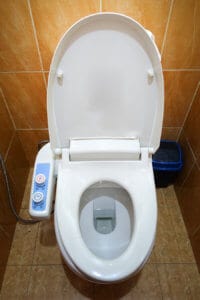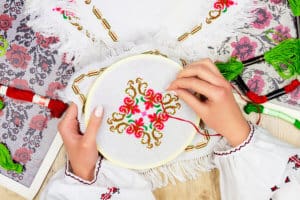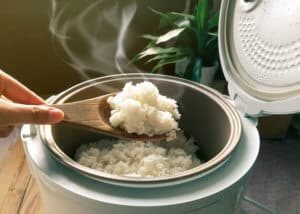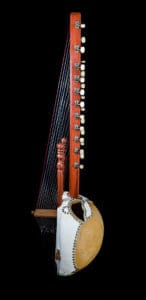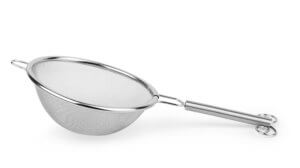Every home is a person's castle and what they put inside it can make it special. But, these essential items differ wherever you are across the globe. Here we have picked our favourite things from places like Gambia right through to China.
Most homes that you see in Hollywood movies and TV Shows have a pretty classic collection of items. Sure, the styles vary and rich people have fancy extras, but there is a standard for must-have items in a typical Western home. But just as your typical American can’t imagine a kitchen without a microwave, various cultures have their own item, appliance or piece of furniture that they can’t live without. Exploring these aspects of international homes may give you inspiration to spice up your own!
Smart Toilets – Japan
Japan has a unique culture that people from all over the world come to discover. People tend to visit with the expectation of eating great food, seeing the sights and meeting the locals. Less expected but equality as exciting are the bathrooms. Many homes, restaurants and businesses in Japan have smart toilets. Some boast heated seats, fancy bidet functions, music or sounds for shy bladders and sometimes even a sink in the back. After you flush, the sink will run the clean water through the sink before refilling the tank, allowing you to save water.
Birthday Bathroom Calendar – The Netherlands
Staying on the bathroom theme, the Dutch don’t often use fancy toilets. However, they do tend to have a calendar in their half bathroom. A half bathroom, for those who don’t know, is a room with just a toilet, sometimes also a sink. Not only do these Dutch bathrooms have calendars, but they are typically birthday calendars. So if you visit someone’s house on your birthday month, you can do your business while looking at your birthday marked on your host’s toilet calendar. This is a high honour and there are rumours that people get upset if their birthday isn’t listed.
Lunch Plates – United Kingdom
It is a bit of a stereotype that Brits are fancy. Just look at their queen with her amazing outfits, great manners and hospitality. In the UK, a cultured home will have proper sets of plates. Among them are lunch plates, which are slightly smaller than dinner plates. A lunch plate is 9 inches, or 22 cm in diameter, although the sizes vary around the globe. Although many homes in the world may have this size of plate, the specification of having a particular size lunch plate in your set seems to be a uniquely British phenomenon.
Embroidery – Ukraine
Ukrainian embroidery occupies an important place among the various branches of Ukrainian decorative arts. Embroidery has a rich history in Ukraine, and has long appeared in Ukrainian folk and has played a part in traditional Ukrainian weddings and other celebrations. Even in 2020, a modern Ukrainian home will contain some sort of embroidery. Whether it’s a vyshyvanka, an embroidered shirt, or a throw pillow. It is a way to show Ukrainian pride and enjoy traditions in everyday life.
Rice Cooker – China
China is the world’s largest producer of rice, with 207 million tons produced in 2014. Rice is a staple of Chinese cuisine and you will rarely see a meal where it isn’t offered on the side. Cooking rice seems simple, but it requires a lot of work to get it just right. A rice cooker is a nifty appliance that will cook the rice to perfection. They come in various sizes and the larger ones can feed a family for days. While rice cookers are becoming popular around the globe, they are as essential in a Chinese home as a microwave is in America.
Heated Table – Spain
Speaking of feeding families, in Spain a popular way to do it is on a heated table. Known as a messa camilla in Spanish, this design consists of a table draped with a heavy blanket-like tablecloth and an electric heater underneath. The main purpose for this isn’t to keep the food hot, but rather to keep the guests warm. Winters in Spain are chilly and many homes don’t have central heating. These heated tables provide comfort during meals, making the experience more cosy.
Kora – Gambia
Like many countries that suffered from colonialism, some traditions were forgotten. Luckily, the kora survived and can be found in many homes. The kora is a string instrument used extensively in West Africa. A kora typically has 21 strings which are played by plucking with the fingers, and combines features of the lute and a harp. It is used to play traditional songs and pass on stories to descendants.
Carpeted Walls – Estonia
While the love for carpets isn’t exclusive to Estonia, you will likely see one, or 10, in a traditional home. Many countries that had been influenced by Russia tend to enjoy the aesthetic of a carpet on the floor and walls. In addition to being pretty, there are practical uses including sound-proofing and improved insulation. Growing up, I have personally visited many such homes and admired the intricate designs. However, the task to clean a carpeted home is not an easy one which is why younger Estonians choose to go the hardwood floor and bare wall route.
Electric Kettle – Scotland
Electric kettles are not as exotic as a rice cooker, but they are not as universal as one may think. It is hard to find a Scottish home without one, although the neighboring countries also use them to brew tea. Even though kettles are common in homes all over the world, in America they tend to be designed for the stove-top instead of being electric. Other countries, such as Ukraine, still enjoy traditional kettles that you place in boiling pots of water. Fun fact: the most popular tea in Scotland is black, and it is generally stronger than a tea like English Breakfast.
Sieve – India
Since we are on the tea train, India is also just a tad tea obsessed. A staple in their homes is the sieve. This is a tea strainer, typically stainless steel and is great for all loose leaf teas. Traditional tea sieves are sturdy and come in different sizes based on how much tea is being made. Families will often have larger sieves so that one pot can be made for everyone to enjoy. People living alone may have a smaller one for just one or two cups.
Tostonera – Puerto Rico
Tostones are a delicious traditional Puerto Rican snack! Tostones are basically twice-fried plantain slices and they are served in a circular form. To create these yummy treats, you need a tostonera. No Puerto Rican household is without one. A tostonera is typically made out of bamboo and presses the tostones into their desired shape and thickness. In addition to the tostonera, you will also find adobo seasoning in every pantry in Puerto Rico. This is the perfect blend of salt, paprika, black pepper, onion powder, oregano, cumin, garlic powder and chilli powder.
Photos: Shutterstock / Edited by: Martina Advaney
Whilst you wait for Part Two to drop next week, why not check out this article:
The Music Memory Box Used to Revive the Broken Bonds of Dementia
Support us!
All your donations will be used to pay the magazine’s journalists and to support the ongoing costs of maintaining the site.
Share this post
Interested in co-operating with us?
We are open to co-operation from writers and businesses alike. You can reach us on our email at [email protected]/[email protected] and we will get back to you as quick as we can.


